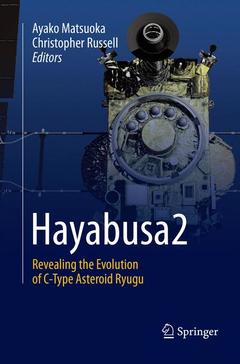Hayabusa2, 1st ed. 2018 Revealing the Evolution of C-Type Asteroid Ryugu
Coordonnateurs : Matsuoka Ayako, Russell Christopher T.

Serves as an encyclopedia of Hayabusa2's newly developed instruments
Forms an indispensable reference to solar system evolution as determined through the study of asteroids
Covers the comprehensive survey techniques used to analyze asteroidal material
Date de parution : 01-2019
Ouvrage de 449 p.
15.5x23.5 cm
Disponible chez l'éditeur (délai d'approvisionnement : 15 jours).
Prix indicatif 158,24 €
Ajouter au panierDate de parution : 09-2018
Ouvrage de 449 p.
15.5x23.5 cm
Disponible chez l'éditeur (délai d'approvisionnement : 15 jours).
Prix indicatif 158,24 €
Ajouter au panierThème de Hayabusa2 :
Mots-clés :
Hayabusa2; Ryugu; MASCOT; asteroid sample-return; OSIRIS-Rex; 162173 Ryugu; solar system evolution



